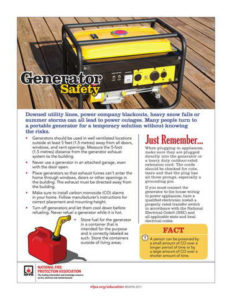 The coldest air of the season will arrive this week with bitter cold and wind chills which could plunge to below zero.
The coldest air of the season will arrive this week with bitter cold and wind chills which could plunge to below zero.
The St. Mary’s County Department of Emergency Services reminds citizens of the importance of having a Carbon Monoxide Detector.
Fuel-powered devices can provide wonderful benefits to families when used properly. But they also underscore an important necessity in the home: the need for a carbon monoxide alarm.
Carbon monoxide poisoning can result from faulty furnaces or other heating appliances, portable generators, water heaters, clothes dryers, or cars left running in garages. At its worst, carbon monoxide can cause severe side effects or even death. Carbon Monoxide is a gas you cannot see, taste or smell.
Install Carbon Monoxide Alarms
• Make sure your home has a carbon monoxide alarm. If you don’t have one, go out and get one.
• As with smoke alarms, make sure you have a carbon monoxide alarm on every level of your home, especially near sleeping areas and keep them at least 15 feet away from fuel-burning appliances.
• You won’t know you have a carbon monoxide leak without a working alarm. So test alarms regularly and replace them every five to seven years depending on the manufacturer’s label.
Understand How Carbon Monoxide Can Be Harmful
• Don’t use a grill, generator or camping stove inside your home, garage or near a window.
• If you need to warm a vehicle, remove it from the garage immediately after starting it.
• Don’t leave a car, SUV or motorcycle engine running inside a garage, even if the doors are open.
• Never use your oven or stovetop to heat your home.
• On the outside of your home, make sure vents for the dryer, furnace, stove and fireplace are clear of snow and other debris.




